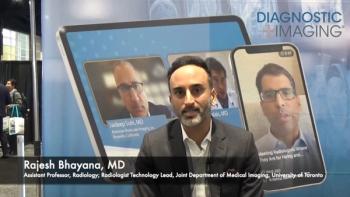
The possibility-probability continuum
What type of reader are you?
It’s rare I encounter someone outside of the academic or research spheres who has any conscious residua from med school-taught epidemiology/EBM. Asked, most will be able to dredge up some recollection of what sensitivity and specificity were, and maybe even stuff like positive and negative predictive value. On the one hand, this is entirely to be expected, since knowledge is a “use it or lose it” affair. On the other, at least for those of us in diagnostic radiology, I think we’re routinely making use of the concepts mentioned above, and more in touch with them than we might credit ourselves. Our familiarity is camouflaged, even from ourselves, in that we use different terminology. It’s most evident to me when reading over radiology reports, including my own. Styles vary, but rads tend to have a certain comfort-zone on a continuum between what an imaging-study could possibly show and what it probably shows. (At least, those rads whose reports draw conclusions about the images they’re interpreting, rather than being purely descriptive…a peeve of mine best left for another column.) A rad towards one extreme of the continuum is the sort whose reports carefully mention everything under the sun the images could possibly be demonstrating. Could be infection, could be other inflammation, could be neoplasia, could be old injury, could be developmental variant, etc. It might all be true and carefully thought out…but someone reading the report is liable to emerge no more clueful about the patient, and maybe even more confused than they were beforehand. At the opposite end of the spectrum is the rad who has a laser-like focus on what the images are probably demonstrating. Rarely, if ever, do his reports offer a differential diagnosis; he might have one in mind, but in the interest of being decisive he’s not bothering with anything beyond the first item on the DDx. He could be right the vast majority of the time…but on the occasion he’s not, a clinician might, unfortunately, be blinded to other diagnostic possibilities. Most of us are somewhere in the middle. We might drift along the continuum during our careers, maybe starting out as more possibility-focused and later, with wisdom and confidence gleaned from years of experience, find greater comfort reporting on the probable rather than the possible. Certain types of imaging-study, and even different referring clinicians, might nudge us this way or that on a case-by-case basis. I’m much more likely to be a probability-rad if I’m given a good patient history with pertinent detail rather than a head-to-toe panscan for “R/O path.” I suspect rads anxious about winding up in the crosshairs of a “gotcha!” style medicolegal or QA system are more inclined towards possibility than probability; saying in your report that the diagnosis is probably “A” leaves you open to lots more potential accusations of a “miss” than if you say it could be anything from “A-to-Z,” and maybe some letters from another alphabet, too. If this sort of thing isn’t on your radar, it probably (ha, ha) should be. As a little experiment, the next time you’re reading cases and proofreading your reports, devote a few neurons to assessing where on the possibility-probability continuum your verbiage places you. It might not be where you’d expect.
Newsletter
Stay at the forefront of radiology with the Diagnostic Imaging newsletter, delivering the latest news, clinical insights, and imaging advancements for today’s radiologists.




























